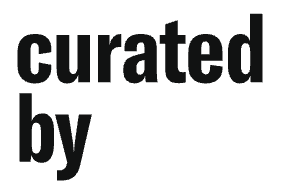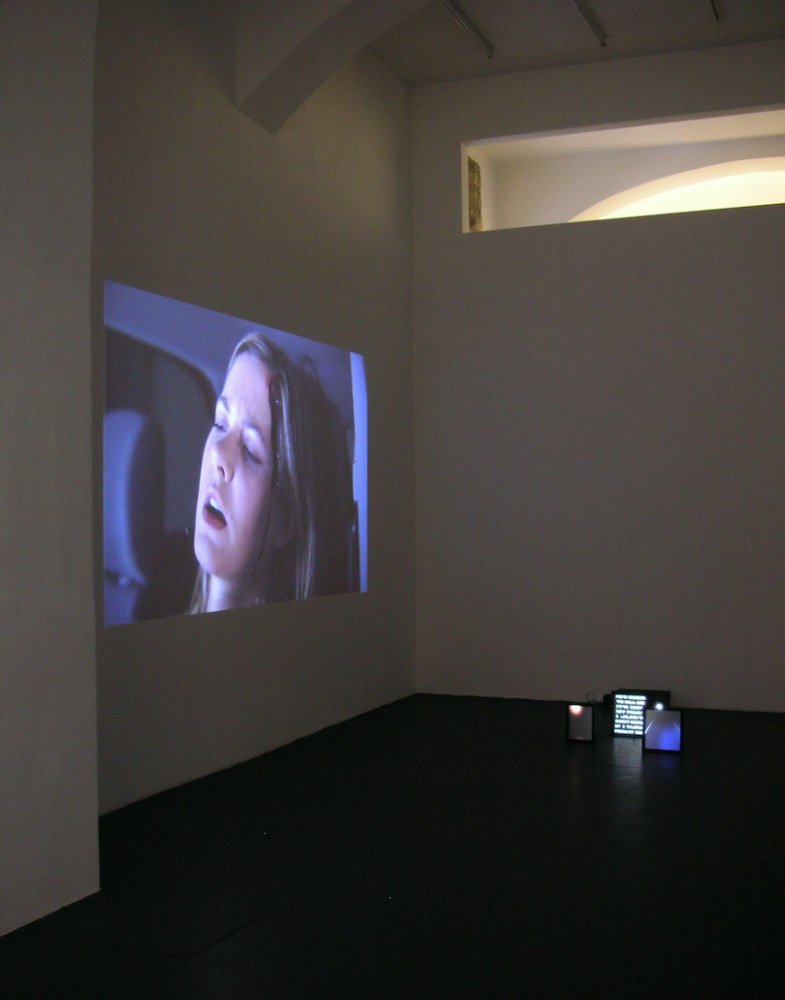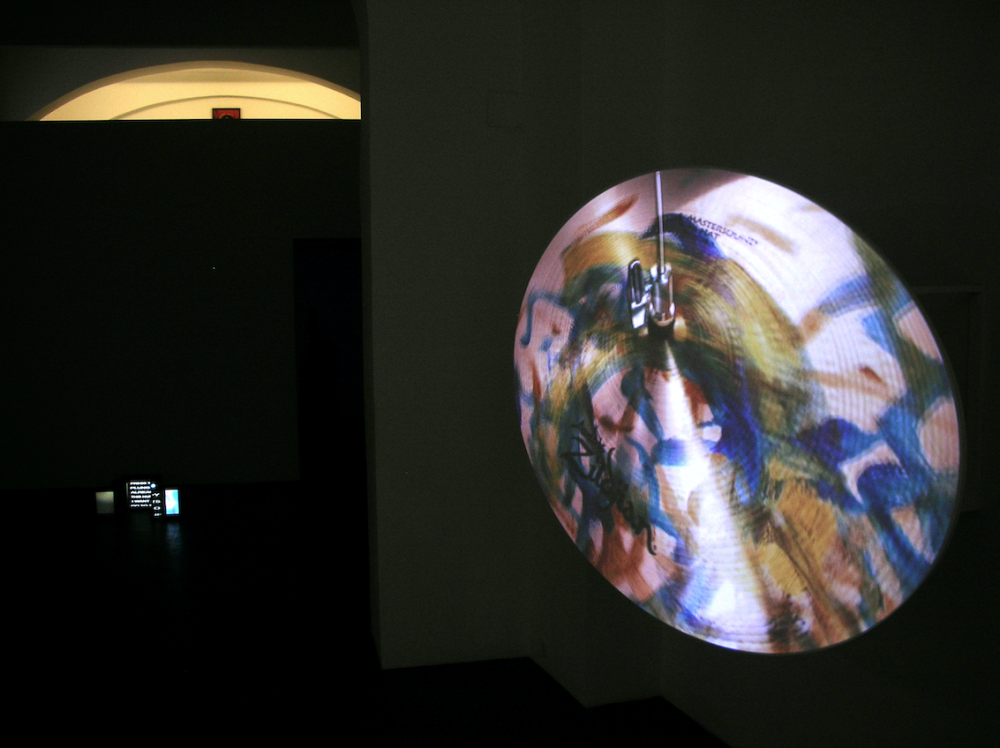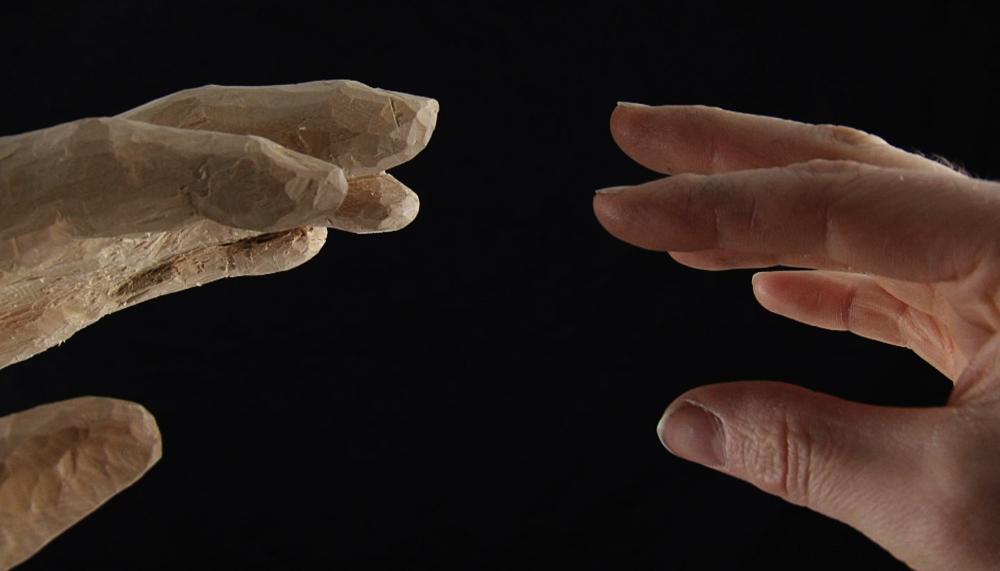silvia steinek galerie curated by Tony Oursler
„lapsed cinematic“
6.5 - 5.6.2010
Press release 

silvia steinek galerie, Eschenbachgasse 4, 1010 Vienna
www.galerie.steinek.at
www.galerie.steinek.at
Curator(s):
Tony Oursler
More 

Born in new York in 1957, lives and works in new York Graduated from the california institute of the arts in 1979 as a BFa. in 1977, he founded the punk rock band Poetic with Mike Kelley and John Miller. a video, sound and installation artist, he is known for video projections on three-dimensional objects combined with theatrical monologues. his subjects revolve around man’s psychological, emotional, and physical states. Recent solo exhibitions include Gehen Bleiben [Going Staying] (2009) at the Bonn Kunstmuseum, LOCK 2,4,6 (2009) at the Kunsthaus Bregenz, Video Art 1965–2005 (2007) at the centre Pompidou in Paris, Dispositifs (2005) at the Jeu de Paume in Paris, Art, Lies, and Videotape: Exposing Performance (2002/3) at tate liverpool and the Konsthall stockholm, American Century (1999) at the Whitney Museum of american art in new York, Directions – Tony Oursler: Video Dolls with Tracey Liepold (1998) at the hirshhorn Museum in Washington, D.c., and Radical Images (1996) at the landesmuseum Joanneum in Graz. he has appeared in a number of international group exhibitions (documenta X, documenta IX, and documenta 8) and figures in important public collections (MoMa, tate Modern, centre Pompidou, sFMoMa, etc.).
Artist(s):
- Martin Murphy
- J.D. Walsh
- Erik Aalto
Exhibition text
More
lapsed cinematic
with erik aalto, martin murphy & j.d. walsh
curated by_tony oursler
6. Mai bis 5 Juni 2010
Galerie Steinek is pleased to announce Lapsed Cinematic, a group exhibition of work by Erik Aalto, Martin Murphy and J.D. Walsh, curated by Tony Oursler.
These three artists, while unique in their endeavor to find new meaning in the syntax of installation and moving image are at the forefront of both art and cinema in this „Lapsed Cinematic“ moment. A characteristic that seems to separate them, is their insistence on putting the viewer at the center of the experience. Informed by the hollow promise of blockbuster film, as well as real promise of philosophical and psychological inter-subjectivity, as expounded upon in Lacans theories of “The Gaze“ and Piaget´s theory of “Object Permanence“. The artists are comfortable navigating this subjective hall off mirrors, created by the viewer´s projected desires. These artists are willing to validate this aspect of human nature, thus mining a new paradigm for the moving image.
J.D. Walsh has done a projection onto a suspended oval screen titled “Dramatization Disc“. The floating screen captures a “synaesthetic system between the sound and the image“, consisting of a record player, speaker cone and a symbol struck rhythmically, which is overlaid with gestural painting and a raucous synthesizer score, seemingly triggered by the motions of the brush. All of this seems to organically chart some sort of brainwave or creative activity. There is a vortex of meaning in this winding, maelstrom of movement. But something is wrong. This is not an EKG that we´re watching, although it has the similar precision and a mesmerizing quality. As Walsh puts it, he is “tuning meaning“ through his dexterous editing and collapsing of visuals, gesture and sound.
Martin Murphy´s work is a three-part dissection of a violent and bloody crash sequence. Murphy is concerned with culturally shared memory and epistemological perceptions of time, exemplified in this work in which one moment of an automobile accident is extruded into an endless moment. Murphy uses hyper clear HD to depict the bleeding face of a driver stuck in the moment of trauma, unable to escape. Hovering in a void of anticipation and fate, the signals are confused. As we look at the bleeding face of the victim, she hovers between terror and ecstasy. If we listen carefully, the monologue is delivered: “It doesn't make sense, I haven't been here for years and I always get lost. Don't be mad at me“, refracting between the three points of view. The audience positions themselves in different temporal moments and perspectives. It becomes part of the moment of impact.
Erik Aalto invites the viewer to enter his cryptic, yet pop-cultural schematic installation. This project traces the interaction between three characters embodied in the abstract forms of a pyramid, circle and square (A carpenter, Smurf and animal). Aalto moves freely between idioms, incorporating beautifully carved sculptures, animations, performances and original music scores. The world-view he proposes is informed as much by data as it is rock videos, and hyper-links occultism, Utopian politics and socially-imposed dichotomies of reality. He leavens his ideas with humor and if you are as welcome to play in his game-like structure, as he puts it, the „Pyramid “ - or Carpenter - is like an alchemist, concerned with creativity, the „Circle“ - or Smurf - is an energy source for the Pyramids achievements. The „Square“ - or Animal - is not interested in progress at all, but is pleased to look at how things work. (Tony Oursler, 2010)
J. D. WALSH
In general, my work deals with open-ended meaning and the completion of that meaning by the viewer. This takes form in many different media, including sculpture, drawing, installation, and video. Regardless of format, my intent is to find the right threshold by adjusting an ambiguity/meaning ratio. This ratio is usually invisible, but is evident when the right balance is reached. It’s a lot like tuning an instrument, and in fact I really like the idea of "tuning" meaning. Like the structuralist filmmakers, I think I've been trying to see if I can get away with using perception itself as the central issue of my work.
When someone is confronted with something that's incomplete, or something that has an open system built into it, it's a person’s tendency to try to complete it. Jacque Lacan’s theories surrounding the “gaze” could be one manifestation of this – a condition where someone’s ideal image is called into question by the projection of their identity onto a “mirror” – which could be any object. TV or cinema screens, furniture, etc - ultimately it is our own projections onto these things that appear to give us a sense of mastery and meaning. This is a relationship that structural cinema and minimalism has utilized to great effect: meaning is generated partly by the viewer, but is predicated by choices that the artist has made.
Some of my works can be seen as chance operations, much in the spirit of Dada, John Cage, or Brion Gysin. Other works utilize text to create and manipulate content. Sound/Image relationships also factor heavily, as is the case of my recent videos. In these, the cinematic practice of the Foley artist is used, where sounds are added to augment or replace naturally occurring sounds on film. In “Dramatization”, for example, an off-screen performer strikes a hi-hat cymbal repeatedly. Meanwhile, a gestural painting is being performed over the surface of the cymbal. Musical notes and applause are then added to match each stroke of the brush, highlighting the notion of painter as performer, but also creating a synaesthetic system between the sound and the image.
ERIK AALTO
I want to manipulate the way we experience our world and through my art make visible the structures that have interpretation prevail in the production of the idea of the contemporary. Trough using alter egos I dislocate reality a bit and approach it from another viewing angle. I am interested in the aesthetics of change, specifically the change of the human mind, and the way it manifests in art and reality, in speech and action.
In “The basic shapes” (video installation) three different minds express existential thoughts through different voices and images. My intentions with this piece are not only to visualize mechanisms of behavior in society, but also to investigate the idea of a subconscious universe. I use ideas from romanticism to point out contemporary structures that are suffocating progress but also inspiring spiritual journeys.
MARTIN MURPHY
My work utilizes a range of media to investigate human psychology and the disruption of logic. While often addressing situations of trauma and isolation, I am interested in scenarios that provoke empathy in the viewer while activating the machinery of memory and expectation.
Whether working with moving images, sculpture, or installation, I am inspired to develop narratives beyond the linear progression of cause and effect. I find this approach to be more in line with how we construct memories and experience time, and I feel this gap of experience is the greatest shortcoming of mainstream cinema. By utilizing conflicting tenses, cyclical stories, and narrative fragments, my resulting work invites viewers to suspend their waking consciousness upon inspection.
Recent projects have engaged with these issues through the fragmentation of narratives in both physical and illusory terms. Upon this approach, I view the framing and movement of a camera shot as similar to the way scale and placement function in sculpture. While my practice maintains no hierarchy between virtual and embodied experiences, I view both modes as a way to bracket perception while opening up new networks of meaning between viewer and viewed.
Photos
Martin Murphy: Exhibition view_lapsed cinematic_Curated by Tony Oursler_video installation by Martin Murphy
--
© Carol Tachdjian
J.D. Walsh: Exhibition view_lapsed cinematic_Curated by Tony Oursler_video installation by J. D. Walsh
--
© Carol Tachdjian




